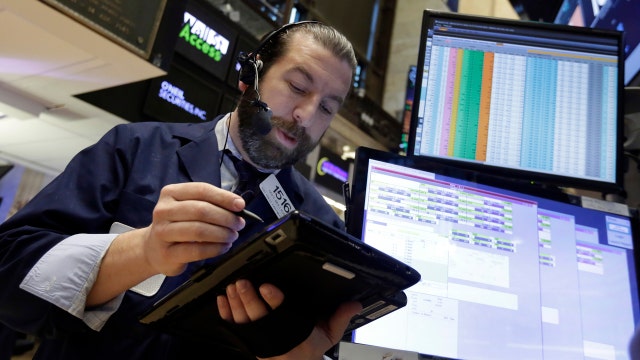Wall Street Sees Weekly Gains as Gloom and Doom Subsides
U.S. equity markets notched solid weekly gains as oil prices rallied and data on the American economy came in better than anticipated.
The major averages ended the week up at least 1.5%, though they slipped in late-day action on Friday. It was the second-straight weekly gain for U.S. equities, a reversal from the constant selling pressure in the first part of the new year.
For the year, the Dow and S&P are down more than 4.5%, while the Nasdaq is off 8.3%.
These were the biggest momentum drivers for Wall Street this week.
Better-than-Expected Data
Data on the U.S. economy proved Wall Street’s fears about a looming recession might not be completely justified.
On Thursday, durable goods orders from the Commerce Department blew past expectations. Orders for long-lasting goods like laptop computers and refrigerators jumped 4.9% higher in January, compared to expectations for a 2.5% gain. Excluding the volatile transportation component, orders rose 1.8%, also well above the estimate for a 0.2% rise.
On Friday, gross domestic product data showed the U.S. economy expanded more than previously thought. The data showed 1% growth during the final quarter of 2015, up from a prior reading of 0.7%, and better than the forecast calling for a decline to 0.4% growth.
Embedded in the GDP report was a revision to the core personal consumption expenditures index, which excludes volatile food and energy components. The Federal Reserve closely watches the inflation gauge as it contemplates future rate hikes. Core personal spending increased 1.7% in January from the same time a year ago – the largest increase since July 2014; A clearer sign inflation is moving closer and closer to the central bank’s 2% target.
“Durable goods were durable, almost up 4% on both measures. You look at PCE, especially the core number that was very good for December. And considering we were in a freefall with oil prices, it does a lot to heal sentiment in the marketplace,” Larry Shover, chief investment strategist at Solutions Fund Group, said.
Further, additional figures from the Commerce Department showed personal income and spending were higher than expected in the first month of 2016. Personal spending rose 0.5% during the month, better than the 0.3% increase expected, while income also grew by 0.5%, beating the estimate for a 0.4% rise.
Mike Loewengart, vice president of Investment Strategy at E-TRADE, said this week’s data supports investors’ views that the economy isn’t necessarily stumbling toward another economic downturn.
“Though there’s been tremendous volatility in the market lately, this morning’s figures remind us that the market isn’t the economy and the economy isn’t the market. They don’t always move in lockstep,” he said.
Loewengart pointed to data from a recent survey conducted by the firm which indicated retail investors are feeling positive about the economy since January, with four out of five respondents having rated the health of the U.S. economy as fair, good or great.
Oil Prices Showed Weekly Gains
Global oil prices mounted positive gains for the week as investors clung to hopes of a production freeze by some of the world’s biggest producers.
For the five-day period, West Texas Intermediate crude prices were 3.24% higher, settling a two-week win streak at $32.78 a barrel. Brent, the international benchmark, meanwhile, gained 6.33% for the week, snapping a three-week losing streak, and settling at $35.10 a barrel.
Last week some of the world’s biggest producers – Russia, Saudi Arabia, Qatar, and Venezuela – said they would consider capping production at January levels as long as other nations joined the effort. Iran, however, which is expected to unleash substantial output this year in order to regain its market share, said it supports other nations curbing production, but stayed mum on whether it was likely to join in on the action.
Meanwhile, global oil prices have fluctuated as investors grapple with what the future holds for output. Shover said in order to keep prices higher, output has to be trimmed somewhere.
“If OPEC freezes production levels at January, in my mind as long as demand stays constant, we’ll be in a balanced situation, maybe even a draw by the end of this year,” he said.
Shover added that for now, though, it’s mostly sentiment that’s ruling the market’s direction, not necessarily fundamentals.
What to Watch Next Week
A slew of key figures on the U.S. economy are set for release next week. Shover said he’s keeping a close eye on the world’s central banks for guidance on how they’ll navigate the slowing global growth situation that drove markets sharply lower in the first month of the year.
Here’s what to watch next week.
? Monday: Midwest manufacturing, pending home sales
? Tuesday: ISM manufacturing, February auto sales
? Wednesday: ADP private-sector employment, Fed’s Beige Book
? Thursday: Weekly jobless claims, ISM services, factory orders
? Friday: February jobs report, international trade




















